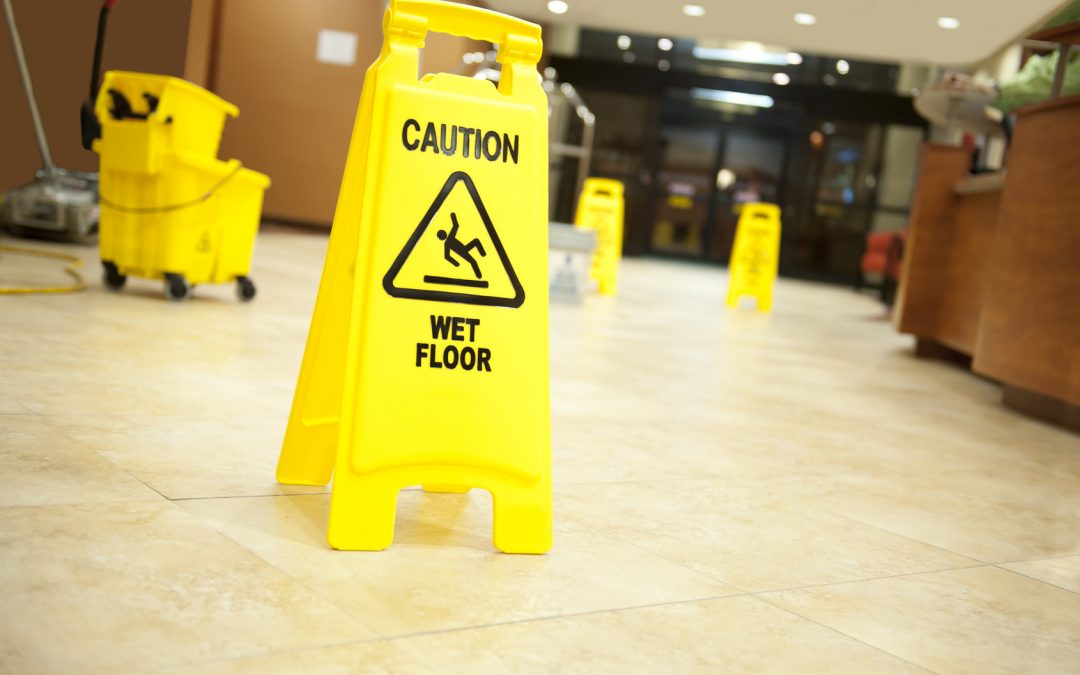Spring cleaning may call to mind scrubbing, picking up and organizing around the home. But now is also a good time to do a big clean-up at work. Every workplace should have a regular housekeeping schedule to avoid common safety hazards. But as you organize your spring cleans there are certain issues you will want to pay especially close attention to:
- Eliminate slipping, tripping and falling hazards.
Accidents that would be categorized under the heading of “Slips, Trips, and Falls” are almost always the leading cause of injury in the workplace, year after year. After all, virtually everyone, no matter what their job or where they work, is susceptible to slipping, tripping, or falling. OSHA states that workplaces need to be “kept clean and orderly and in sanitary condition.” Substances like oil, grease, and water must be cleaned up immediately. Aisles and walkways need to be clear of debris. Mirrors and warning signs should be installed in “blind spot areas.” Damaged flooring should be replaced. Anti-slip flooring or mats should be used in areas that cannot always be kept clean. - Remove fire hazards
OSHA states that combustible waste should be stored in covered metal receptacles and disposed of daily.” Keep combustible materials in the work area only in necessary amounts. Store quick-burning, flammable materials in designated locations, away from ignition sources. Avoid contaminating clothes with flammable liquids. Keep materials 18 inches away from fire extinguishers, sprinklers, and sprinkler controls. - Control dust
Dust accumulation of more than 1/32 of an inch, covering at least 5% of a room’s surface poses a significant explosion hazard, according to the National Fire Protection Association. NFPA 654 – fire and dust explosion standard – addresses identifying hazard areas, controlling dust and housekeeping. The standard states that the preferred method is vacuuming. Ideally, make use of a wet-vacuuming system. - Keep the spread of dirt and hazardous materials to a minimum.
Floor mats should be kept clean, to help stop the spread of hazardous materials to other areas of the workplace, or workers’ homes. - Remove the potential for falling objects
Toe boards, toe rails and nets can prevent falling objects from hitting workers. Place heavy objects on lower shelves. Don’t stack items near walking areas. - Keep walkways clean and clear
- Return tools and other materials to storage immediately after use. Keep aisles, stairways, emergency exits, electrical panels, and doors free of clutter.
- Store materials properly
OSHA’S Materials Handling, Storage, Use and Disposal Standard (1926.250) states that storage areas should not have an accumulation of materials that present hazards for tripping, fire, explosion, or pests. Don’t store items such as ladders, and tools, in electrical closets, where important electrical panels could be blocked.


IT IS GOOD TO DO INSPECTION